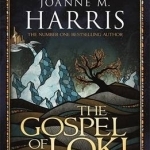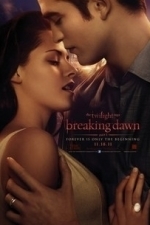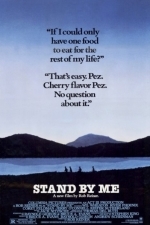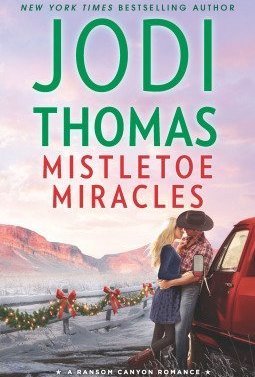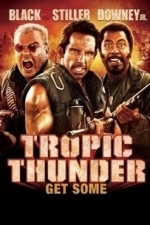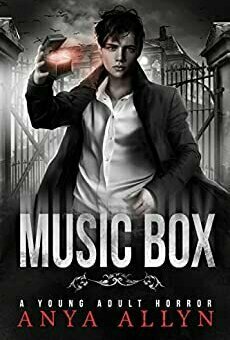Search
Search results

Girls Tailor Dress Up 3D: Fun Games For Girls
Lifestyle and Games
App
▶▶ Try out our new free app and have fun with the best fashion designer “dress up games”!...
Rachael Moyes (404 KP) rated The Gospel of Loki in Books
Jul 8, 2017
Fantastic take on the character of Loki
‘The Gospel of Loki’ by Joanne M. Harris is the story of the Norse Gods from the point of view of Loki, the Trickster. I’ve always found Norse Mythology very interesting and Loki is by far my favourite of the Gods. I first heard about this book about a year ago and I finally managed to grab a copy from my local library earlier this week, then proceeded to read the whole book in two days. It was just that good!
Odin rules the nine worlds from his fortress of Asgard. When this book starts his people, the Aesir, have finally made peace with the Vanir and members of both groups make up the Gods of Asgard. The world is split into Order and Chaos, with Odin and the Gods trying to maintain Order over the nine realms. Loki was born from Chaos and is essentially a demon with no physical form (or Aspect) living in the realm of Pandaemoniem under the evil Lord Surt. But Loki was curious about the worlds where Order and Chaos co-existed so he left Chaos and traveled to the worlds above where he gained a physical Aspect, met Odin and was invited back to Asgard where he became the 25th God.
He did not receive a warm welcome from the other Gods, however, and soon lived up to his names of Wildfire and the Trickster. This book, which I would imagine takes place over a number of years, tells the story of many of Loki’s exploits in the nine realms including when he tricked a builder into fortifying Asgard’s walls without paying him, cut off Sif’s golden hair (to Thor’s outrage), got Thor to dress up as a bride to infiltrate the Ice Folk and kill their enemies, met the giants of Utgard and their own Trickster Utgard-Loki, all the way up to Ragnarok and the final battle between Order and Chaos.
Okay, I’ve just tried to describe the plot fairly simply above and I don’t know how much sense it will have made if you’re not familiar with the Norse Gods, but hopefully it wasn’t too bad!
I’ve always found Norse Mythology very interesting, mainly, I think, because of the diverse characters and fanciful stories. We get to meet all those characters in this book; Odin, Thor, Frey, Freyja, Balder, Frigg, Sigyn, Skadi, Gullvieg-Heid & many more. And as this book is written in first person from Loki, we see them all from his point of view. I also loved Loki’s illegitimate children, particularly Hel, the ruler of the Underworld and Fenris the werewolf.
I know a fair bit about Loki from things I’ve read online and books about mythology so I was a bit wary going in about how historically accurate Joanne had written her character, but I have to say that I found her version of Loki spot on! She voiced him perfectly and I also found the other characters to be very close to what I’ve read about them.
I really enjoyed the author’s writing style and the story flowed so well that I found it really difficult to put down. Loki’s storytelling was both informative and engaging and each of his stories flowed into each other very well.
This book is very heavy on the Norse Mythology (obviously) and I think it’s probably best to go into it with a little bit of knowledge beforehand. I think that if I knew nothing of the subject before, I might have found it a bit overwhelming mainly due to the amount of characters and worlds. But saying that, it is so well written and well explained that I think anyone could read it, I just think you’d get more enjoyment out of it if you knew a bit about some of the characters first. There is a very useful character list at the beginning that you can go back to.
I would definitely recommend this book to anyone who loves Norse Mythology, especially Loki and Odin but I think anyone who likes a good fantasy novel would enjoy it :)
Odin rules the nine worlds from his fortress of Asgard. When this book starts his people, the Aesir, have finally made peace with the Vanir and members of both groups make up the Gods of Asgard. The world is split into Order and Chaos, with Odin and the Gods trying to maintain Order over the nine realms. Loki was born from Chaos and is essentially a demon with no physical form (or Aspect) living in the realm of Pandaemoniem under the evil Lord Surt. But Loki was curious about the worlds where Order and Chaos co-existed so he left Chaos and traveled to the worlds above where he gained a physical Aspect, met Odin and was invited back to Asgard where he became the 25th God.
He did not receive a warm welcome from the other Gods, however, and soon lived up to his names of Wildfire and the Trickster. This book, which I would imagine takes place over a number of years, tells the story of many of Loki’s exploits in the nine realms including when he tricked a builder into fortifying Asgard’s walls without paying him, cut off Sif’s golden hair (to Thor’s outrage), got Thor to dress up as a bride to infiltrate the Ice Folk and kill their enemies, met the giants of Utgard and their own Trickster Utgard-Loki, all the way up to Ragnarok and the final battle between Order and Chaos.
Okay, I’ve just tried to describe the plot fairly simply above and I don’t know how much sense it will have made if you’re not familiar with the Norse Gods, but hopefully it wasn’t too bad!
I’ve always found Norse Mythology very interesting, mainly, I think, because of the diverse characters and fanciful stories. We get to meet all those characters in this book; Odin, Thor, Frey, Freyja, Balder, Frigg, Sigyn, Skadi, Gullvieg-Heid & many more. And as this book is written in first person from Loki, we see them all from his point of view. I also loved Loki’s illegitimate children, particularly Hel, the ruler of the Underworld and Fenris the werewolf.
I know a fair bit about Loki from things I’ve read online and books about mythology so I was a bit wary going in about how historically accurate Joanne had written her character, but I have to say that I found her version of Loki spot on! She voiced him perfectly and I also found the other characters to be very close to what I’ve read about them.
I really enjoyed the author’s writing style and the story flowed so well that I found it really difficult to put down. Loki’s storytelling was both informative and engaging and each of his stories flowed into each other very well.
This book is very heavy on the Norse Mythology (obviously) and I think it’s probably best to go into it with a little bit of knowledge beforehand. I think that if I knew nothing of the subject before, I might have found it a bit overwhelming mainly due to the amount of characters and worlds. But saying that, it is so well written and well explained that I think anyone could read it, I just think you’d get more enjoyment out of it if you knew a bit about some of the characters first. There is a very useful character list at the beginning that you can go back to.
I would definitely recommend this book to anyone who loves Norse Mythology, especially Loki and Odin but I think anyone who likes a good fantasy novel would enjoy it :)
Movie Metropolis (309 KP) rated The Twilight Saga: Breaking Dawn Part 1 (2011) in Movies
Jun 11, 2019
Finally, a Twilight film that doesn’t have men in the audience going green with envy as they stare at Taylor Lautner’s washboard abs and finally, a Twilight film that doesn’t actually stink.
Of course, those of you familiar with my reviews know that I’m not fond of the Twilight Saga in the slightest, but here I’m prepared to eat my words as newcomer Bill Condon (Dreamgirls) directs a surprisingly enjoyable outing. Unfortunately, it all comes a bit late as this is the penultimate film in Stephanie Meyer’s book series.
Sadly, the Twilight films have never had the critical success of their Harry Potter cousins, probably due to their wooden acting, dire scripting and disappointing special effects, but here, Breaking Dawn Part 1 manages to be at least as good as the first two films of its wizarding counterpart.
The similarities between the two series’ don’t stop there. The decision to split the final book in the Twilight series was probably done because of the success Harry Potter had by splitting the final book into two films.
Here, Bill Condon manages to inject some life into the franchise with good acting, good special effects and finally, a good storyline. Edward (Robert Pattinson) and Bella (Kristen Stewart) have finally decided to tie the knot. Naturally, Jacob (Taylor Lautner) is less than pleased with this announcement and decides to run away in a fit of rage. Will he be back for the wedding? GASP!
Alas, he makes it and just before Edward whisks Bella on their honeymoon, some pleasantries are exchanged between the bride and the wolf. So, the honeymoon comes and Bella realises she’s pregnant; oh dear. The film then follows her journey to becoming a mother and the growing beast inside her. Thankfully, the point where the film is split doesn’t jar like it did in Harry Potter and the Deathly Hallows and seems to follow a natural ending.
The special effects have also upped their game for the latest instalment as the (still blatantly obvious) CGI werewolves look much more realistic. Also, the acting has improved leaps and bounds with Kristen Stewart being a real highlight. The realisation that motherhood could kill her is fantastically portrayed by Stewart, though the special effects making her look frail probably helped here.
Taylor Lautner is the best out of the male leads and does the role some justice, whilst Robert Pattinson is mediocre as Edward.
There’s still a problem with the films pacing however. It seems that events that would take 10 minutes worth of screen time in other films have to take 30 in the Twilight saga; it’s a major annoyance as it interrupts the flow of the film and the constant close ups of the characters’ faces grate after a while.
Also, Condon has clearly not directed many films that require action scenes. A major fight with the werewolves and the Cullen’s should have been a real highlight, but it’s a sloppily directed sequence with bodies mashing together. You’re unsure as to who is who, a problem which blights the Transformers film series.
Thankfully there are numerous highlights, the shots of Rio are breath-taking and Bella giving birth is truly horrific, you can’t take your eyes of the screen for a second. Also worth a mention is a part where the werewolves are running through the forest and end up in a logging plant. It’s a fabulous sequence that really makes you grip your seat.
The Twlight Saga: Breaking Dawn Part 1 is a good film. It finally makes use of the promising source material it has been blessed with and it’s pleasing to see that a good sense of direction is all it takes to turn around the fortunes of a film series. It’s far from perfect, with sloppy action scenes and terrible pacing, but finally, I left the cinema with a sense of happiness – I’m actually looking forward to part two. (I can’t believe I just said that.)
https://moviemetropolis.net/2011/11/27/the-twilight-saga-breaking-dawn-part-1-2011/
Of course, those of you familiar with my reviews know that I’m not fond of the Twilight Saga in the slightest, but here I’m prepared to eat my words as newcomer Bill Condon (Dreamgirls) directs a surprisingly enjoyable outing. Unfortunately, it all comes a bit late as this is the penultimate film in Stephanie Meyer’s book series.
Sadly, the Twilight films have never had the critical success of their Harry Potter cousins, probably due to their wooden acting, dire scripting and disappointing special effects, but here, Breaking Dawn Part 1 manages to be at least as good as the first two films of its wizarding counterpart.
The similarities between the two series’ don’t stop there. The decision to split the final book in the Twilight series was probably done because of the success Harry Potter had by splitting the final book into two films.
Here, Bill Condon manages to inject some life into the franchise with good acting, good special effects and finally, a good storyline. Edward (Robert Pattinson) and Bella (Kristen Stewart) have finally decided to tie the knot. Naturally, Jacob (Taylor Lautner) is less than pleased with this announcement and decides to run away in a fit of rage. Will he be back for the wedding? GASP!
Alas, he makes it and just before Edward whisks Bella on their honeymoon, some pleasantries are exchanged between the bride and the wolf. So, the honeymoon comes and Bella realises she’s pregnant; oh dear. The film then follows her journey to becoming a mother and the growing beast inside her. Thankfully, the point where the film is split doesn’t jar like it did in Harry Potter and the Deathly Hallows and seems to follow a natural ending.
The special effects have also upped their game for the latest instalment as the (still blatantly obvious) CGI werewolves look much more realistic. Also, the acting has improved leaps and bounds with Kristen Stewart being a real highlight. The realisation that motherhood could kill her is fantastically portrayed by Stewart, though the special effects making her look frail probably helped here.
Taylor Lautner is the best out of the male leads and does the role some justice, whilst Robert Pattinson is mediocre as Edward.
There’s still a problem with the films pacing however. It seems that events that would take 10 minutes worth of screen time in other films have to take 30 in the Twilight saga; it’s a major annoyance as it interrupts the flow of the film and the constant close ups of the characters’ faces grate after a while.
Also, Condon has clearly not directed many films that require action scenes. A major fight with the werewolves and the Cullen’s should have been a real highlight, but it’s a sloppily directed sequence with bodies mashing together. You’re unsure as to who is who, a problem which blights the Transformers film series.
Thankfully there are numerous highlights, the shots of Rio are breath-taking and Bella giving birth is truly horrific, you can’t take your eyes of the screen for a second. Also worth a mention is a part where the werewolves are running through the forest and end up in a logging plant. It’s a fabulous sequence that really makes you grip your seat.
The Twlight Saga: Breaking Dawn Part 1 is a good film. It finally makes use of the promising source material it has been blessed with and it’s pleasing to see that a good sense of direction is all it takes to turn around the fortunes of a film series. It’s far from perfect, with sloppy action scenes and terrible pacing, but finally, I left the cinema with a sense of happiness – I’m actually looking forward to part two. (I can’t believe I just said that.)
https://moviemetropolis.net/2011/11/27/the-twilight-saga-breaking-dawn-part-1-2011/
BankofMarquis (1832 KP) rated Stand by Me (1986) in Movies
Jun 15, 2018
A Modern Classic
Remember the days of your youth, when Summer was just one long vacation - where you and your buddies would take off and let the day unfold as it presents itself - no schedules, no meetings and the only clock was the rising and setting of the sun?
Such, nostalgic, feelings and remembrances is at the heart of the 1986 Rob Reiner film, STAND BY ME, a "coming of age" tale of boys on the cusp of leaving boyhood behind.
Based on a Stephen King novella, STAND BY ME follows the adventures of Gordie LaChance and his pals Vern, Teddy and Chris as they set off to find the body of a young man who has been missing - and presumed dead.
But it is not the destination that is at the heart of this story, it is the journey - and what a journey, filled with heart, it is. We join in with these 4 boys as the walk towards the unknown - both physically and (more importantly) metaphorically, growing and developing in front of our eyes.
Credit for this film has to start with Director Rob Reiner - mainly known before this film as "Meathead" on the classic TV Series ALL IN THE FAMILY. This was Reiner's 5th film as a Director and, I believe, announced his "arrival" as a signature Director. Look at the run Reiner had. In order, he directed THIS IS SPINAL TAP, THE SURE THING, STAND BY ME, THE PRINCESS BRIDE, WHEN HARRY MET SALLY, MISERY and A FEW GOOD MEN. I would also include THE AMERICAN PRESIDENT and GHOSTS OF MISSISSIPPI in this list, but they come after the misfire NORTH. But, 9 out of 10 good films is quite the track record.
What struck me in this showing of the film (seen on the big screen for the first time by me since 1986) is the contrast between intimacy and enormity. When the boys are on their trek, Reiner shoots a good deal of these scenes from a distance - showing how small these boys are in comparison to the world around them. But, when the scene is an intimate, dialogue, character-driven scene, he tightens his shots right into the faces of the 4 leads, creating an intimacy that draws us into these characters.
The other credit has to go to whomever cast this film - for the 4 unknown boys that were cast in the leads were well cast, indeed.
Start with Wil Wheaton as Gordie. Gordie has spent his whole life in the shadow of his over-achieving "All American" brother, trying to be noticed for who - and what - he is, an author, not an athlete. Wheaton brings the right combination of determination, intelligence and vulnerability to Gordie, giving us a protagonist we can root for. Jerry O'Connell was funnier than I remembered as the "fat kid", Vern, who just wants to play by the rules, but always goes along with his friends, despite his better judgement. Corey Feldman has never been better than he is here as Teddy Duchamp - a young boy with a troubled home life - and a troubled life - that is trying to control, and understand, the rage inside of him.
But it is the work of the late River Phoenix as Chris Chambers, the "leader" of this group that really shines. He is the glue that keeps this foursome together, strong but showing a vulnerability and a "realistic" view of what it is to be a misunderstood youth - the hurt that comes with that and the walls that one puts up to combat that. Phoenix commands the screen in every scene that he is in and when the scene is just Phoenix and Wheaton, you are drawn into a real friendship.
I was surprised, at this viewing, at how serious this film is - and the topics that this film addresses - but those moments are wisely balanced by scenes of action/adventure (like the train tressel scene), comedy (like the the "lard-ass" pie eating scene) and "other" moments (the leaches!).
This is one of those films that is getting better with time - it is aging well - and, rightfully, fits in the category of "Modern Classic".
Letter Grade: A
Such, nostalgic, feelings and remembrances is at the heart of the 1986 Rob Reiner film, STAND BY ME, a "coming of age" tale of boys on the cusp of leaving boyhood behind.
Based on a Stephen King novella, STAND BY ME follows the adventures of Gordie LaChance and his pals Vern, Teddy and Chris as they set off to find the body of a young man who has been missing - and presumed dead.
But it is not the destination that is at the heart of this story, it is the journey - and what a journey, filled with heart, it is. We join in with these 4 boys as the walk towards the unknown - both physically and (more importantly) metaphorically, growing and developing in front of our eyes.
Credit for this film has to start with Director Rob Reiner - mainly known before this film as "Meathead" on the classic TV Series ALL IN THE FAMILY. This was Reiner's 5th film as a Director and, I believe, announced his "arrival" as a signature Director. Look at the run Reiner had. In order, he directed THIS IS SPINAL TAP, THE SURE THING, STAND BY ME, THE PRINCESS BRIDE, WHEN HARRY MET SALLY, MISERY and A FEW GOOD MEN. I would also include THE AMERICAN PRESIDENT and GHOSTS OF MISSISSIPPI in this list, but they come after the misfire NORTH. But, 9 out of 10 good films is quite the track record.
What struck me in this showing of the film (seen on the big screen for the first time by me since 1986) is the contrast between intimacy and enormity. When the boys are on their trek, Reiner shoots a good deal of these scenes from a distance - showing how small these boys are in comparison to the world around them. But, when the scene is an intimate, dialogue, character-driven scene, he tightens his shots right into the faces of the 4 leads, creating an intimacy that draws us into these characters.
The other credit has to go to whomever cast this film - for the 4 unknown boys that were cast in the leads were well cast, indeed.
Start with Wil Wheaton as Gordie. Gordie has spent his whole life in the shadow of his over-achieving "All American" brother, trying to be noticed for who - and what - he is, an author, not an athlete. Wheaton brings the right combination of determination, intelligence and vulnerability to Gordie, giving us a protagonist we can root for. Jerry O'Connell was funnier than I remembered as the "fat kid", Vern, who just wants to play by the rules, but always goes along with his friends, despite his better judgement. Corey Feldman has never been better than he is here as Teddy Duchamp - a young boy with a troubled home life - and a troubled life - that is trying to control, and understand, the rage inside of him.
But it is the work of the late River Phoenix as Chris Chambers, the "leader" of this group that really shines. He is the glue that keeps this foursome together, strong but showing a vulnerability and a "realistic" view of what it is to be a misunderstood youth - the hurt that comes with that and the walls that one puts up to combat that. Phoenix commands the screen in every scene that he is in and when the scene is just Phoenix and Wheaton, you are drawn into a real friendship.
I was surprised, at this viewing, at how serious this film is - and the topics that this film addresses - but those moments are wisely balanced by scenes of action/adventure (like the train tressel scene), comedy (like the the "lard-ass" pie eating scene) and "other" moments (the leaches!).
This is one of those films that is getting better with time - it is aging well - and, rightfully, fits in the category of "Modern Classic".
Letter Grade: A
Heather Cranmer (2721 KP) rated Mistletoe Miracles (Ransom Canyon #7) in Books
Sep 12, 2018
Lovable Characters (3 more)
Interesting Plot
Great Worldbuilding
Good Pacing
A Clean, Sweet Read
I'm not usually a romance person, but the synopsis for Mistletoe Miracles by Jodi Thomas caught my attention. I'm really glad I read Mistletoe Miracles because I absolutely adored this book. In fact, Mistletoe Miracles may have converted me to be a romance reader. It has definitely made me a Jodi Thomas fan for sure.
The pacing for Mistletoe Miracles was spot on. It wasn't a fast paced book, but it wasn't slow paced either. It moved at a nice relaxing pace, and I found myself loving it.
The plot for Mistletoe Miracles is a sweet one. It was interesting to see each couple's relationship blossom. Mallory is on the run from her abusive ex-boyfriend. She ends up in a car crash. Her dog is also injured in the crash. Little does Jax know he has her dog, but once he figures it out, it's the start of something sweet. Griffin needs a rich bride in order to save his working ranch that's been in the family for generations. Sunlan, a ranch girl herself, is just the right woman to fill that position. She's also looking for someone to take her away from her overbearing father. Wyatt is a soldier just looking for a place to rest while on leave. With everyone assuming he's Jamie's husband, he is taken to Jamie's house after he falls asleep and has a small crash. Jamie has been out of town, but when she returns, she's gets the biggest surprise of her life. However, she's been telling everyone she's married even though she's not. Wyatt may just be the (pretend) husband she needs. The reader has the pleasure of reading about each immersive relationship and how each one blossoms in its own way. There are no major plot twists, but Mistletoe Miracles is a book that doesn't need plot twists to be enjoyable. All loose ends are also tied up by the end of the book which I was happy about. I also liked that Mistletoe Miracles can be read as a standalone.
I felt that the world building in Mistletoe Miracles was done very well. Jodi Thomas makes it so easy to feel as if you are one of the characters in her book. She puts you right in the midst of everything that is happening, and it is so easy to lose yourself within each page of the story. Mistletoe Miracles takes place in Texas which made me enjoy the book even more! The world building is so realistic in this novel that I would lose track of time whenever I was reading it.
I loved every character in Mistletoe Miracles. I felt each character was fleshed out substantially, and every character felt like they were an actual real person instead of a character in a book. My favorite characters in this book were Sunlan and Griffin. I loved how they started out a bit distant towards each other, but eventually, they warmed up to one another and came out of their shell, especially Sunlan. Don't get me wrong, I loved the other characters too, but it was Sunlan's and Griffin's relationship that I loved the most. I did enjoy reading about all the other character's relationships as well, and I found them to be very interesting. Each character had something to bring to the table to make Mistletoe Miracles the great read it is.
There aren't many trigger warnings for Mistletoe Miracles. I would classify it was a clean romance. There's no swearing and no steamy scenes. There is some violence although it is not graphic. There is some drinking of alcohol as well as kissing. There's also talk about making love but everything is implied and not described in graphic detail.
Overall, Mistletoe Miracles is a very sweet and refreshing read that will warm even the most hardened hearts. It's got very likable and realistic characters characters, an interesting plot, and fantastic world building. I would definitely recommend Mistletoe Miracles by Jodi Thomas to everyone aged 16+ whether they like romance or not. This is one of those books that everyone should read even if romance isn't their preferred genre.
(Thank you to Netgalley for providing me with a copy of this title in exchange for an honest and unbiased review.)
The pacing for Mistletoe Miracles was spot on. It wasn't a fast paced book, but it wasn't slow paced either. It moved at a nice relaxing pace, and I found myself loving it.
The plot for Mistletoe Miracles is a sweet one. It was interesting to see each couple's relationship blossom. Mallory is on the run from her abusive ex-boyfriend. She ends up in a car crash. Her dog is also injured in the crash. Little does Jax know he has her dog, but once he figures it out, it's the start of something sweet. Griffin needs a rich bride in order to save his working ranch that's been in the family for generations. Sunlan, a ranch girl herself, is just the right woman to fill that position. She's also looking for someone to take her away from her overbearing father. Wyatt is a soldier just looking for a place to rest while on leave. With everyone assuming he's Jamie's husband, he is taken to Jamie's house after he falls asleep and has a small crash. Jamie has been out of town, but when she returns, she's gets the biggest surprise of her life. However, she's been telling everyone she's married even though she's not. Wyatt may just be the (pretend) husband she needs. The reader has the pleasure of reading about each immersive relationship and how each one blossoms in its own way. There are no major plot twists, but Mistletoe Miracles is a book that doesn't need plot twists to be enjoyable. All loose ends are also tied up by the end of the book which I was happy about. I also liked that Mistletoe Miracles can be read as a standalone.
I felt that the world building in Mistletoe Miracles was done very well. Jodi Thomas makes it so easy to feel as if you are one of the characters in her book. She puts you right in the midst of everything that is happening, and it is so easy to lose yourself within each page of the story. Mistletoe Miracles takes place in Texas which made me enjoy the book even more! The world building is so realistic in this novel that I would lose track of time whenever I was reading it.
I loved every character in Mistletoe Miracles. I felt each character was fleshed out substantially, and every character felt like they were an actual real person instead of a character in a book. My favorite characters in this book were Sunlan and Griffin. I loved how they started out a bit distant towards each other, but eventually, they warmed up to one another and came out of their shell, especially Sunlan. Don't get me wrong, I loved the other characters too, but it was Sunlan's and Griffin's relationship that I loved the most. I did enjoy reading about all the other character's relationships as well, and I found them to be very interesting. Each character had something to bring to the table to make Mistletoe Miracles the great read it is.
There aren't many trigger warnings for Mistletoe Miracles. I would classify it was a clean romance. There's no swearing and no steamy scenes. There is some violence although it is not graphic. There is some drinking of alcohol as well as kissing. There's also talk about making love but everything is implied and not described in graphic detail.
Overall, Mistletoe Miracles is a very sweet and refreshing read that will warm even the most hardened hearts. It's got very likable and realistic characters characters, an interesting plot, and fantastic world building. I would definitely recommend Mistletoe Miracles by Jodi Thomas to everyone aged 16+ whether they like romance or not. This is one of those books that everyone should read even if romance isn't their preferred genre.
(Thank you to Netgalley for providing me with a copy of this title in exchange for an honest and unbiased review.)
Gareth von Kallenbach (980 KP) rated Tropic Thunder (2008) in Movies
Aug 14, 2019
Deep in the jungles of Vietnam, one of the most expensive films in history is underway. The film is based upon a best seller by war hero Four Leaf Tayback (Nick Nolte), and stars three of the biggest stars in Hollywood so naturally expectations are very high for the film to become a box office blockbuster.
Unfortunately the production is troubled by one gaffe after another and finds itself lost in budget over runs, issues amongst the stars, and more drama than a Shakespeare festival.
The film is “Tropical Thunder” and Director and star Ben Stiller has assembled a talented cast that includes Jack Black and Robert Downey Jr. in a biting satire of the Hollywood machine.
Stiller stars as Tugg Speedman, a declining action star who sees the war film as his big chance to break away from his recent failures and move into more serious work. Tugg is overshadowed by the presence of multiple Oscar winner Kirk Lazarus (Robert Downey Jr.), who prepares for a part so intensely that he literally becomes the character he is portraying. Toward that end, he has undergone a skin pigment procedure in order to portray an African American soldier.
Rounding out the group, literally, is Jeff Portnoy (Jack Black), the star of flatulence based film comedy series and a man wracked by addiction to the point that he hides his drugs in a candy package and refers to them as his jelly beans.
After a staggeringly costly and impressive pyrotechnic display by the sets explosive expert Cody (Danny Mc Bride), the film is in danger of being halted by the money behind the film, an intensely angry Producer named Les Grossman (Tom Cruise).
In an effort to keep his film alive and salvage their careers, Four Leaf and the film’s Director decide to drop the cast in the thick of the jungle and shoot the film gorilla style with hidden cameras and various tricks to produce a grittier film and get the cast to start acting like the soldiers they are supposed to be portraying.
In a hilarious turn of events, the cast ends up trapped in the jungle and surrounded by members of the locale drug cartel. Convinced that it is all part of the film, Tugg and company blindly trudge along thinking all is going as scripted until things go hopelessly wrong, and force the cast to come to grips with the situation as well as their fragile egos and personal issues.
While the premise of the film is solid, and there are a good number of laughs in the film, for the most part “Tropic Thunder” is a hit or miss venture.
Robert Downey Jr. is amazing in his portrayal as he constantly steals his scenes with his expressions and one liners and almost single handled carries the film during some of the more tedious moments.
Stiller plays the patented Stiller character once again, the slow witted loser with a heart of gold, and despite his efforts, he is just not given enough material to fully push his character over the top, despite some funny moments.
The biggest disappointment for me was Jack Black who is sadly underused in the film. Jack is a very gifted and talented actor but he is given very little to work with, and precious few moments to let his talents shine. Owen Wilson was originally supposed to be in the film, and at times it seems that this part was written more with Wilson’s more subdued style of humor in mind.
Aside from the laughs, the film does have an abundance of celebrity cameos, and this truly helps the film. Sadly though, the plot really does not do justice to the premise nor talent in the film, and unfolds in a very unspectacular manner that had me expecting more.
This is not to say it is a bad film as I found myself laughing on more than one occasion, sadly it became fewer and father between laughs as the film unfolded to a very disappointing finale.
Unfortunately the production is troubled by one gaffe after another and finds itself lost in budget over runs, issues amongst the stars, and more drama than a Shakespeare festival.
The film is “Tropical Thunder” and Director and star Ben Stiller has assembled a talented cast that includes Jack Black and Robert Downey Jr. in a biting satire of the Hollywood machine.
Stiller stars as Tugg Speedman, a declining action star who sees the war film as his big chance to break away from his recent failures and move into more serious work. Tugg is overshadowed by the presence of multiple Oscar winner Kirk Lazarus (Robert Downey Jr.), who prepares for a part so intensely that he literally becomes the character he is portraying. Toward that end, he has undergone a skin pigment procedure in order to portray an African American soldier.
Rounding out the group, literally, is Jeff Portnoy (Jack Black), the star of flatulence based film comedy series and a man wracked by addiction to the point that he hides his drugs in a candy package and refers to them as his jelly beans.
After a staggeringly costly and impressive pyrotechnic display by the sets explosive expert Cody (Danny Mc Bride), the film is in danger of being halted by the money behind the film, an intensely angry Producer named Les Grossman (Tom Cruise).
In an effort to keep his film alive and salvage their careers, Four Leaf and the film’s Director decide to drop the cast in the thick of the jungle and shoot the film gorilla style with hidden cameras and various tricks to produce a grittier film and get the cast to start acting like the soldiers they are supposed to be portraying.
In a hilarious turn of events, the cast ends up trapped in the jungle and surrounded by members of the locale drug cartel. Convinced that it is all part of the film, Tugg and company blindly trudge along thinking all is going as scripted until things go hopelessly wrong, and force the cast to come to grips with the situation as well as their fragile egos and personal issues.
While the premise of the film is solid, and there are a good number of laughs in the film, for the most part “Tropic Thunder” is a hit or miss venture.
Robert Downey Jr. is amazing in his portrayal as he constantly steals his scenes with his expressions and one liners and almost single handled carries the film during some of the more tedious moments.
Stiller plays the patented Stiller character once again, the slow witted loser with a heart of gold, and despite his efforts, he is just not given enough material to fully push his character over the top, despite some funny moments.
The biggest disappointment for me was Jack Black who is sadly underused in the film. Jack is a very gifted and talented actor but he is given very little to work with, and precious few moments to let his talents shine. Owen Wilson was originally supposed to be in the film, and at times it seems that this part was written more with Wilson’s more subdued style of humor in mind.
Aside from the laughs, the film does have an abundance of celebrity cameos, and this truly helps the film. Sadly though, the plot really does not do justice to the premise nor talent in the film, and unfolds in a very unspectacular manner that had me expecting more.
This is not to say it is a bad film as I found myself laughing on more than one occasion, sadly it became fewer and father between laughs as the film unfolded to a very disappointing finale.

Duas of Prophet (Sallallahu alayhi wasallam) ( Islam Quran Hadith - Ramadan Islamic Apps ) )
Book and Education
App
Al-Khawarizmi is a trusted name in Islamic Apps development for years. We have sold thousands of...
Heather Cranmer (2721 KP) rated Music Box (Dark Carousel #4) in Books
Nov 23, 2020
I've loved the Dark Carousel series by Anya Allyn. I couldn't wait to dive into Music Box, the last book in the series, but at the same time, I was saddened that it was coming to an end. Music Box was definitely a thrilling read!
Cassie has given up hope of not being Balthazar's bride. She's about to just give in to it when she finds a way to the tower where the spooky figure she has seen lives. Scared as she is of the figure, she decides to investigate and is shocked to discover who the figure is. Cassie, with the help of her friends, must find some way to defeat the serpent shadows before they take over the Earth all while battling the humans and spirits of the castle. While she and her friends put their lives in great peril, they never give up hope of returning the Earth to its former glory.
The plot of Music Box did a fantastic job of holding my attention throughout. While there are some parts of this novel that are a bit too fast paced like in previous books in the series, for the most part, the pacing is easy to follow along with. There are a few plot twists that I wasn't able to predict. There was so much action going on in Music Box, and I loved it. It wasn't overwhelming, and it was underwhelming. Anya Allyn did a fantastic job with getting the ratio of action to narrative perfect! I did have a feeling that one of the characters in the Dollhouse would make an appearance, and I wasn't wrong. I liked the way all the loose ends from the previous books in the series were all tied up nicely. While I wasn't really a fan of how the book ended, I will say that it didn't have a rushed ending feel. I just wish things would have turned out a bit differently. However, I did love how the author explains more of the ending and what she believes happened to all the other characters in the afterword, so definitely don't skip out on reading the afterword!
As always, Anya Allyn was amazing at making her characters come alive. It was so easy to relate to all of them (bad guys and girls aside). Cassie was even more hardcore in this book! I loved how Cassie was willing to sacrifice everything to protect her friends and others. Ethan was the same as Cassie. He tried to protect innocents from the bad guys. While I liked Molly, I still don't think her character was needed, same with Frances. Don't get me wrong, they are great characters and written really well, but they seemed a bit pointless. I was happy about Aisha in this book. (I won't go into greater detail due to minor spoilers.) I absolutely loved Zack, and I was always secretly hoping that Cassie would end up with him. Zack turned out to be such a gentlemen from the second book. I loved how he was willing to cut ties from his family to help Cassie even though he knew it was an unrequited love. Henry was another character that I really loved. I felt that he wasn't all bad and that there was some good in him. The book he was seeking in the novel was what brought out the bad. He did have a bunch of redeeming qualities though. I was overjoyed that Jessamine was finally featured a bit more in this book! Jessamine has been my favorite character throughout this series. I was thrilled with how her story ended. I always knew she'd turn out to be awesome!
Trigger warnings for Music Box include violence, death, murder, suicide, attempted rape, minor swearing, the occult, and imprisonment.
While I'm devastated that the Dark Carousel series has come to an end, I am so grateful that Music Box was a great read. All of the characters were still so amazing, the story was thrilling, and everything was so nicely explained. I would definitely recommend Music Box (and all of the Dark Carousel series) by Anya Allyn. If you want a book with lots of action and a great cast of characters, this is your book. Do be prepared to suffer from a book hangover when you're done reading it though!
Cassie has given up hope of not being Balthazar's bride. She's about to just give in to it when she finds a way to the tower where the spooky figure she has seen lives. Scared as she is of the figure, she decides to investigate and is shocked to discover who the figure is. Cassie, with the help of her friends, must find some way to defeat the serpent shadows before they take over the Earth all while battling the humans and spirits of the castle. While she and her friends put their lives in great peril, they never give up hope of returning the Earth to its former glory.
The plot of Music Box did a fantastic job of holding my attention throughout. While there are some parts of this novel that are a bit too fast paced like in previous books in the series, for the most part, the pacing is easy to follow along with. There are a few plot twists that I wasn't able to predict. There was so much action going on in Music Box, and I loved it. It wasn't overwhelming, and it was underwhelming. Anya Allyn did a fantastic job with getting the ratio of action to narrative perfect! I did have a feeling that one of the characters in the Dollhouse would make an appearance, and I wasn't wrong. I liked the way all the loose ends from the previous books in the series were all tied up nicely. While I wasn't really a fan of how the book ended, I will say that it didn't have a rushed ending feel. I just wish things would have turned out a bit differently. However, I did love how the author explains more of the ending and what she believes happened to all the other characters in the afterword, so definitely don't skip out on reading the afterword!
As always, Anya Allyn was amazing at making her characters come alive. It was so easy to relate to all of them (bad guys and girls aside). Cassie was even more hardcore in this book! I loved how Cassie was willing to sacrifice everything to protect her friends and others. Ethan was the same as Cassie. He tried to protect innocents from the bad guys. While I liked Molly, I still don't think her character was needed, same with Frances. Don't get me wrong, they are great characters and written really well, but they seemed a bit pointless. I was happy about Aisha in this book. (I won't go into greater detail due to minor spoilers.) I absolutely loved Zack, and I was always secretly hoping that Cassie would end up with him. Zack turned out to be such a gentlemen from the second book. I loved how he was willing to cut ties from his family to help Cassie even though he knew it was an unrequited love. Henry was another character that I really loved. I felt that he wasn't all bad and that there was some good in him. The book he was seeking in the novel was what brought out the bad. He did have a bunch of redeeming qualities though. I was overjoyed that Jessamine was finally featured a bit more in this book! Jessamine has been my favorite character throughout this series. I was thrilled with how her story ended. I always knew she'd turn out to be awesome!
Trigger warnings for Music Box include violence, death, murder, suicide, attempted rape, minor swearing, the occult, and imprisonment.
While I'm devastated that the Dark Carousel series has come to an end, I am so grateful that Music Box was a great read. All of the characters were still so amazing, the story was thrilling, and everything was so nicely explained. I would definitely recommend Music Box (and all of the Dark Carousel series) by Anya Allyn. If you want a book with lots of action and a great cast of characters, this is your book. Do be prepared to suffer from a book hangover when you're done reading it though!

PhotoPills
Photo & Video and Education
App
Unlock your creative potential! Discover how to easily turn any Sun, Moon and Milky Way scene you...
